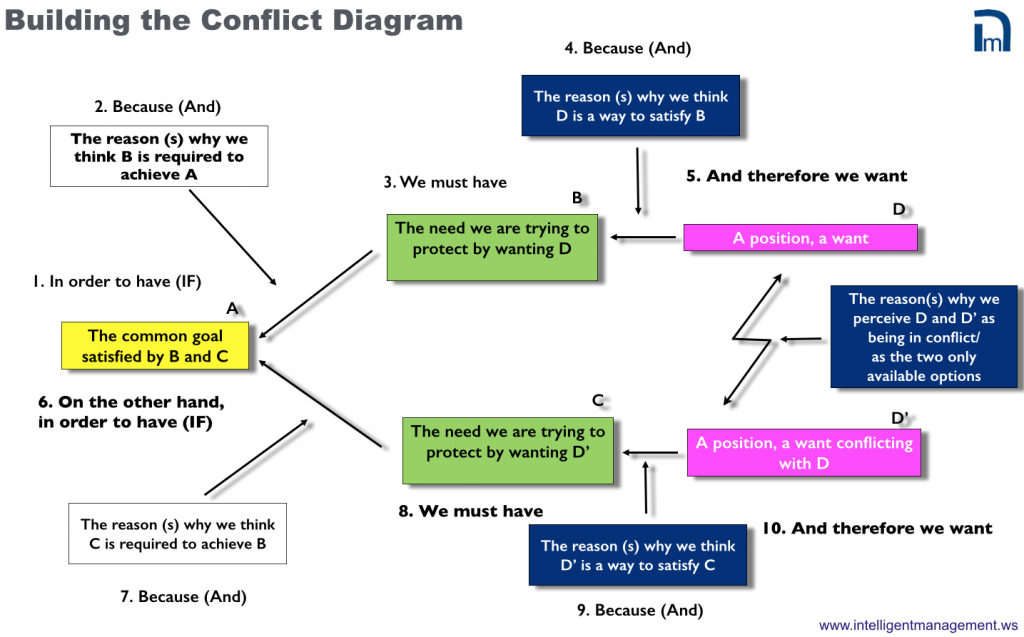 We’re getting ready to launch our new eBook ‘The Human Constraint’, a business novel for the New Economy. We’re excited to share a snippet of the accompanying online learning centre that accompanies each chapter of the novel. This section deals with limiting beliefs and a tool to overcome them.
We’re getting ready to launch our new eBook ‘The Human Constraint’, a business novel for the New Economy. We’re excited to share a snippet of the accompanying online learning centre that accompanies each chapter of the novel. This section deals with limiting beliefs and a tool to overcome them.
Assumptions and limiting beliefs
In a chapter of ‘The Human Constraint’ set in 2007, two of the characters realize they are looking at the same scene – the Manhattan skyline, but seeing different things. One characters sees a skyline of tall buildings, the other character sees a huge gap where the twin towers used to be. They are coming to the same reality with different information, different biases, different assumptions, or limiting beliefs.
Some of the assumptions we have in life are very necessary. They help us to navigate our reality. Others, however, can be very limiting. They can contribute to our forming limiting beliefs about our reality and what we can do within it.
Transforming the Negative
People, organizations, and even entire sectors and industries, have limiting beliefs. These beliefs prevent people and organizations artificially from achieving more than they currently do. We refer to these beliefs as “assumptions”. They are mental models about the reality in which we operate. First of all, these assumptions need to be surfaced and verbalized accurately. Only then can we challenge them. Rather than using techniques to combat them, we can attack them with a powerful set of cognitive tools that transform those limiting beliefs into a positive strategy for change as well as a full plan for implementation. (See Thinking Process Tools from the Theory of Constraints.)
From Bondage to Freedom
Over the years of transferring the Decalogue methodology to organizations, we have unearthed a vast array of assumptions, or limiting beliefs, some of which are specific to an organization, and some which are common to a particular sector. They may have to do with how long it takes to produce a particular product, or what kind of market the organization should address. They may even be about why the organization actually exists and what it does. One of the most exhilarating aspects of our work is surfacing and challenging these beliefs. Once this is achieved, the sense of liberation is palpable, a whole new horizon of possibilities emerges, and the exciting task of designing and implementing a new reality begins. The only limit is what we can conceive. Using the Conflict Cloud to expose and challenge assumptions and limiting beliefs We write the Conflict Cloud from right to left, starting with the conflicting positions D and D’, then we verbalize the needs that these positions are trying to protect. Once the needs are verbalized, we can derive from them a common goal that satisfies both needs. We then add the assumptions (mental models) in between each item of the cloud. These assumptions are the prevailing logic of our situation. They are the “because” that connects one box with another. As we move from left to right across the cloud, the assumptions become weaker and easier to challenge. The weakest assumptions of all are those between D and D’. They are the reason for the conflict, and when we are able to challenge and invalidate those assumptions, we open a pathway for positive change towards something better, and toward unleashing potential that is currently trapped.

Coming this month! Our new business novel The Human Constraint is an e-book that takes the reader on a roller-coaster ride through the financial crisis and towards a new model for future business. The e-book comes with an accompanying website highlighting chapter by chapter the thinking, methods and tools to achieve a new economy of sustainable wealth.





Leave a Reply